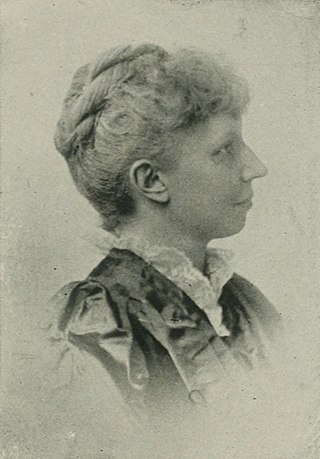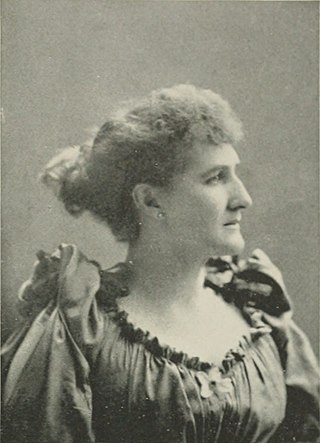
Mary Ashton Livermore was an American journalist, abolitionist, and advocate of women's rights. Her printed volumes included: Thirty Years Too Late, first published in 1847 as a prize temperance tale, and republished in 1878; Pen Pictures; or, Sketches from Domestic Life; What Shall We Do with Our Daughters? Superfluous Women, and Other Lectures; and My Story of the War. A Woman's Narrative of Four Years' Personal Experience as Nurse in the Union Army, and in Relief Work at Home, in Hospitals, Camps and at the Front during the War of the Rebellion. She wrote a sketch of the sculptor Anne Whitney for Women of the Day and delivered the historical address for the Centennial Celebration of the First Settlement of the Northwestern States in Marietta, Ohio on July 15, 1788.

Edward Eggleston was an American historian and novelist.
Elwyn Seelye was the founder of the New York State Historical Association and the first custodian of the Lake George battlefield site.

Rosina Emmet Sherwood was an American painter.

Kate Parker Scott Boyd was a 19th-century American artist, journalist, and temperance worker from the U.S. state of New York. She won a number of medals and prizes in the Centennial Exposition of 1876.

Sara Miranda Cobb was a 19th-century American art teacher, artist, and writer from the U.S. state of New York. She served as director of the Art School of the Maine Wesleyan Seminary and Female College at Kents Hill, Maine, and taught drawing at Colorado State University.

Allegra Eggleston was a 19th-century American artist from the U.S. state of Minnesota. She occupied herself as a woodcarver, portrait painter, and book illustrator. As an illustrator, she collaborated with her sister, Elizabeth Eggleston Seelye, and her father, Edward Eggleston, on a number of books including The story of Columbus (1892), The story of Washington, and The Graysons.

Blanche Annie Dillaye was a 19th-century artist from the U.S. state of New York. After studying at the Pennsylvania Academy of Fine Arts, she became one of the significant figures in the American etching revival movement. She acquired prominence in one of the most difficult of arts, and was accepted in some respects as an authority in a field where far more men than women were in competition.

Emma Curtiss Bascom was a 19th-century American educator, suffragist and reformer from Massachusetts. She was a charter member of the Association for the Advancement of Woman and for many years was an officer of its board.

Clara Louise Burnham was an American novelist. After the success of No Gentlemen (1881), other books followed, including A Sane Lunatic (1882), Dearly Bought (1884), Next Door (1886), Young Maids and Old (1888), The Mistress of Beech Knoll (1890), and Miss Bagg's Secretary (1892). The daughter of George Frederick Root, she wrote the text for several his most successful cantatas. The 1923 film, A Chapter in Her Life is based on Burnham's 1903 novel Jewel: A Chapter in Her Life. Born in Massachusetts, she died at the family home in Maine in 1927.

Eliza Archard Conner was an American writer, journalist, novelist, lecturer, teacher, and feminist of the long nineteenth century. Hailing from Ohio, Conner began writing for newspapers at the age of 13. She served in various roles for the Saturday Evening Post, of Philadelphia, the Commercial of Cincinnati, and the New York World of New York City. She also worked towards the emancipation and advancement of women.

Lady Mary Alice Seymour was a 19th-century American musician, author, elocutionist, and critic. She was referred to as "Octavia Hensel" in the music world, where she was an internationally known music critic. As a critic, Seymour was renowned. Her musical nature, her superior education, her thorough knowledge of the laws of theory and familiarity with the works of the great composers of the classic, romantic and Wagnerian schools, and the later schools of harmony, gave her a point of vantage above the ordinary. She was one of the original staff writers on the Musical Courier, having been its correspondent from Vienna and other European centers. Seymour played the piano, harp, guitar and organ, but never appeared on the stage, except for charitable events, as her relatives were opposed to her pursuing a professional life. A "confirmed bluestocking", Seymour was also a polyglot who spoke seven languages fluently: German, French, Spanish, Italian, Portuguese, Romanian, and Hungarian dialects. She died in 1897.

Mary Elizabeth Sherwood was an American author and socialite. She wrote short stories, poetry, several books, and etiquette manuals, in addition to contributing to many magazines and translating poems from European languages. Among her writings are The Sarcasm of Destiny, A Transplanted Rose, Manners and Social Usages, Sweet Briar, and Roxobel. Better known as Mrs. John Sherwood, some of her literary works were published as "M.E.W.S." or "M.E.W. Sherwood".

Mary Bigelow Ingham was an American author, educator, and religious worker. Dedicated to teaching, missionary work, and temperance reform, she served as professor of French and belles-lettres in the Ohio Wesleyan College; presided over and addressed the first public meeting ever held in Cleveland conducted exclusively by religious women; co-founded the Western Reserve School of Design ; and was a charter member of the order of the Daughters of the American Revolution.

Louise Hammond Snead was an American artist, writer, and composer. Her art specialized in miniature painting, illustrations, and needlework. She lectured on Persian rugs, wrote articles of various topics under a masculine pseudonym, and even composed a march.

Emma Elizabeth Brown, pen names B. E. E. and E. E. Brown, was an American author of prose, biographies, and poetry. She was also an artist.

Ella Loraine Dorsey was an American author, journalist, and translator. She contributed articles to magazines and wrote many stories, among them Midshipman Bob, Jet, the War Mule, The Taming of Polly, The Children of Avalon, The Jose Maria, The Two Tramps, Saxty's Angel, Pickle and Pepper, The End of the White Man's Trail, and Pocahontas.

Marie Robinson Wright was an American travel writer of the long nineteenth century. She was elected member of learned societies in various parts of the world; and served as a special delegate or representative to international expositions. It was, however, as an observer and especially as a writer, that Wright gained her fame. Her books were written about Brazil, Bolivia, Chile, Peru, and Mexico. These volumes were generous octavos, well illustrated, and filled with facts gathered chiefly from authoritative sources or confirmed by her own observations. They ran through more than one edition, and were esteemed in the countries they described. She was a contemporary of Nellie Bly. Wright died in 1914.

Mercedes Leigh was an American actress. She was widely known by her stage name, Mercedes Leigh, which she chose when she began her professional career. Her contemporaries were Mary Haviland Sutton and Mary C. Francis.

Nellie Marie Burns was a 19th-century American actor and poet.





















